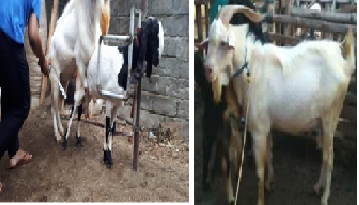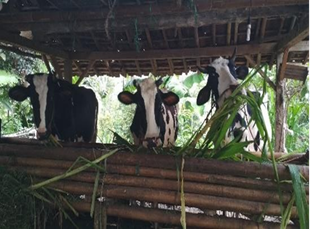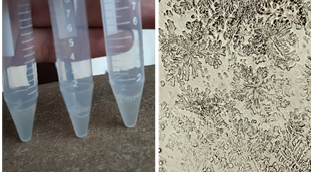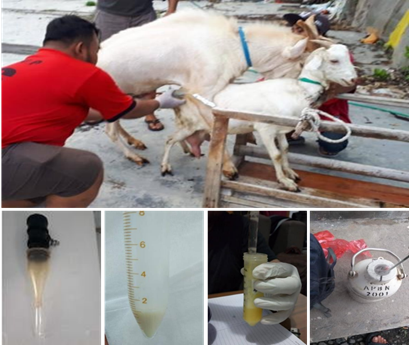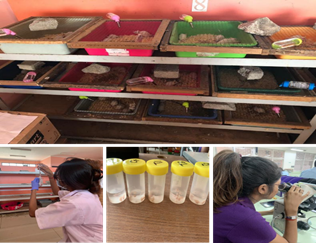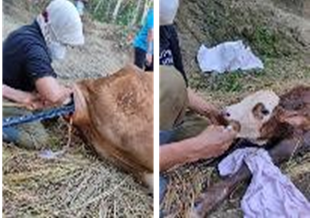A study on the beneficial effect of advocating prophylactic spaying of young nulliparous bitches to prevent pyometra
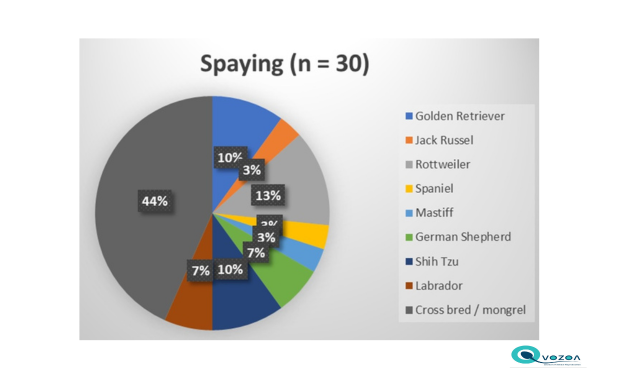
Downloads
This study aimed to evaluate the potential benefits of advocating elective spaying (ES) in young nulliparous bitches as a preventive measure for pyometra, a severe and potentially life-threatening condition. Specifically, the study examined whether elective spaying, which eliminates the risk of pyometra and its associated complications, offers significant advantages over the treatment of pyometra once it develops. Generally, the short- and long-term risks associated with elective spaying are minimal when compared to the significant complications and dangers posed by pyometra. A retrospective open-ended study was conducted, collecting data from veterinary clinics across Penang Island using a structured questionnaire. Information was gathered primarily from medical records and interviews with veterinarians and pet owners when data were missing or unclear in the records. The study compared 30 bitches of various breeds who underwent elective spaying with 30 bitches who underwent emergency ovariohysterectomy (EOH) due to pyometra. A standard set of outcomes was evaluated to assess and compare complications. The results showed that the elective spaying group experienced only minor or trivial complications, and owners incurred significantly lower costs compared to those whose bitches underwent emergency surgery for pyometra, which was associated with more severe complications and substantially higher costs. Based on these findings, the study concluded that elective spaying is a safe and cost-effective prophylactic measure against pyometra.
Airikkala-Otter I, Gamble L, Mazeri S, Handel IG, Bronsvoort BMC, Mellanby RJ, Meunier NV. 2018. Investigation of short-term surgical complications in a low-resource, high-volume dog sterilisation clinic in India. BMC Vet Res. 14: 56.
Baithalu RK, Maharana BR, Mishra C, Sarangi L, Samal L. 2010. Canine pyometra. Vet World 3: 340-2.
Beauvais W, Cardwell JM, Brodbelt DC. 2012. The effect of neutering on the risk of mammary tumours in dogs--a systematic review. J Small Anim Pract 53: 314-22.
Bjørnvad CR, Gloor S, Johansen SS, Sandøe P, Lund TB. 2019. Neutering increases the risk of obesity in male dogs but not in bitches - A cross-sectional study of dog- and owner-related risk factors for obesity in Danish companion dogs. Prev Vet Med. 170: 104730.
Burrow R, Batchelor D, Cripps P. 2005. Complications observed during and after ovariohysterectomy of 142 bitches at a veterinary teaching hospital. Vet Rec. 157: 829-33.
Gibson A, Dean R, Yates D, Stavisky J. 2013. A retrospective study of pyometra at five RSPCA hospitals in the UK: 1728 cases from 2006 to 2011. Vet Rec. 173: 396.
Hagman R. 2022. Pyometra in small animals 2.0. Vet Clin North Am Small Anim Pract. 52: 631-57.
Holland KE. 2019. Acquiring a pet dog: A review of factors affecting the decision-making of prospective dog owners. Animals (Basel) 9: 124.
Howe LM. 2015. Current perspectives on the optimal age to spay/castrate dogs and cats. Vet med. (Auckland, NZ) 6: 171-80.
Jitpean S, Ström-Holst B, Emanuelson U, Höglund OV, Pettersson A, Alneryd-Bull C, Hagman R. 2014. Outcome of pyometra in female dogs and predictors of peritonitis and prolonged postoperative hospitalization in surgically treated cases. BMC Vet Res. 10: 6.
Johnston SD, Root Kustritz MV, Olson PNS. 2001. Canine and feline theriogenology. 1st Ed. Saunders.
Kutzler MA. 2020. Possible relationship between long-term adverse health effects of gonad-removing surgical sterilization and Luteinizing Hormone in dogs. Animals (Basel) 10: 599.
Lefebvre SL, Yang M, Wang M, Elliott DA, Buff PR, Lund EM. 2013. Effect of age at gonadectomy on the probability of dogs becoming overweight. J Am Vet Med Assoc. 243: 236-43.
Mckenzie B. 2010. Evaluating the benefits and risks of neutering dogs and cats. CAB Reviews: Perspectives in Agriculture, Veterinary Science, Nutrition and Natural Resources 5 : 1-18.
Romagnoli S, Krekeler N, de Cramer K, Kutzler M, McCarthy R, Schaefer-Somi S. 2024. WSAVA guidelines for the control of reproduction in dogs and cats. J Small Anim Pract. 65: 424-559. doi:10.1111/jsap.13724.
Rungphattanachaikul S, Akatvipat A, Chia MPC, Lampang KN, Sthitmatee N. 2021. A retrospective study of suspected pyometra causing systemic illness in 348 dogs. Vet Integr Sci. 19: 141-52.
Smith FO. 2006. Canine pyometra. Theriogenology 66: 610-2.
Xavier RGC, Santana CH, de Castro YG, de Souza TGV, do Amarante VS, Santos RL, Silva ROS. 2023. Canine pyometra: A short review of current advances. Animals (Basel) 13: 3310. doi: 10.3390/ani13213310.
Copyright (c) 2025 Sharveihn Sathindren, Suryo Kuncorojakti, Suzanita Utama, Tita Damayanti Lestari, Wiwik Misaco Yuniarti

This work is licensed under a Creative Commons Attribution-ShareAlike 4.0 International License.
Ovozoa by Unair is licensed under a Creative Commons Attribution-ShareAlike 4.0 International License.
1. The journal allows the author to hold the copyright of the article without restrictions.
2. The journal allows the author(s) to retain publishing rights without restrictions
3. The legal formal aspect of journal publication accessibility refers to Creative Commons Attribution Share-Alike (CC BY-SA).
4. The Creative Commons Attribution Share-Alike (CC BY-SA) license allows re-distribution and re-use of a licensed work on the conditions that the creator is appropriately credited and that any derivative work is made available under "the same, similar or a compatible license”. Other than the conditions mentioned above, the editorial board is not responsible for copyright violation.





























